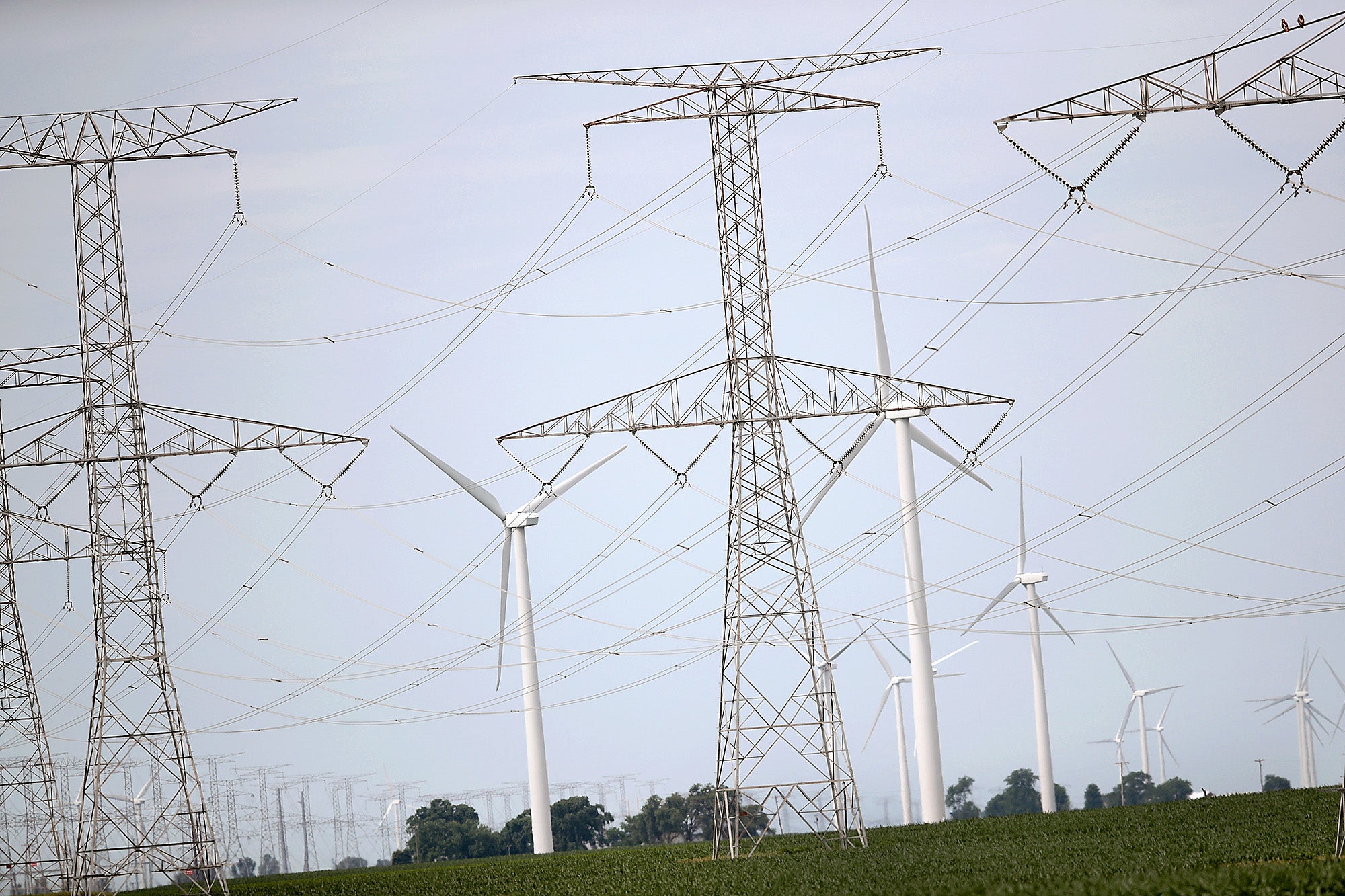America’s Clean Energy Transition Needs Federal Action – Not Rollbacks
To speed up clean energy we must tackle the transmission bottleneck – right now.
In May, President Biden signed a deal to avoid historic default on our nation’s debt. But it came at a high price, especially for communities on the frontlines of oil and gas expansion.
While so-called permitting reform was at the heart of the deal, the compromise did not advance the deployment of clean energy. That’s why we’re calling on the Biden administration and Congress to focus on the true linchpin of our clean energy transition: immediately and equitably alleviating the energy transmission bottleneck.
If we are going to meet the deadline to avert the worst impacts of climate change, we must generate and deliver enough clean electricity to electrify everything from cars and trucks to buildings and factories — and quickly. Achieving this wholesale clean energy transition will require a mobilization of government and industry on a scale we haven’t seen since World War II. It will also require smart planning and much faster approvals to speed up the development of renewable energy and new transmission lines.
We know big transmission projects falter for three main reasons: siting battles at the state and local level; arguments about who should pay the costs of expensive projects that do not directly benefit the communities where the projects take place; and outdated systems for planning and approving projects among regional grid operators, the independent agencies that control, coordinate, and monitor the electric grid.
As many renewable energy developers will attest, the heart of the problem is not lengthy environmental reviews or litigation — it is energy regulation. Developers have repeatedly reported difficulties connecting to the energy grid. Over 2,000 gigawatts of solar, wind, and battery storage projects are waiting to connect to the grid, according to the Energy Department. That’s more power than the country’s current generating capacity.
The root of delays is the backlog in inter and intrastate clean energy connections, which are the result of poor planning and coordination across the many actors involved in transmission development, including the Federal Energy Regulatory Commission (FERC), regional transmission operators, state utility commissions and permitting agencies, and utilities.
To build transmission faster and more fairly, we need smart reforms that target the drivers of the transmission bottleneck while preserving critical environmental, health, and community protections and enhancing community engagement.
Here’s the good news: Many of the reforms we need can be implemented under existing legal authorities. We already have rules governing transmission siting that offer the federal government, specifically the Department of Energy (DOE) and FERC, an avenue for expediting the siting and approval of high-priority transmission lines.
The Infrastructure Investment and Jobs Act (IIJA) recently strengthened the National Interest Electric Transmission Corridor (NIETC) designation process and backstop siting provisions — giving DOE and FERC a clear pathway to site certain high-priority transmission lines.
And FERC already has the power to require interregional planning with meaningful public engagement and consultation, particularly in environmental justice and tribal communities.
Sensible measures that promote efficiency and transparency — like a new fast-tracking process for transmission and other major energy projects, called FAST-41 — are already in place. Given the administration’s willingness to speed up projects using existing legal authorities, nothing is preventing transmission developers from opting into the existing FAST-41 process that would ensure coordinated agency review under expeditious timelines.
To get us the rest of the way there, we need to see the legislative action both parties promised to create a pathway for federal siting of large, interregional transmission projects that support new renewable generation. We need to codify and expand methods for identifying the costs and benefits of transmission projects, and we need to share those costs equitably.
There are already several proposals from Congress. Senator Sheldon Whitehouse’s (D-RI) SITE Act addresses many of these issues directly by focusing its reforms on FERC. For example, because building out the energy grid currently requires negotiating complex interstate relationships and laws, the SITE Act would make FERC the authority for siting all large transmission facilities and would empower FERC to allocate the costs of these projects.
More proposals — including Senator Ed Markey’s (D-MA) CHARGE Act and the Environmental Justice for All Act — would help speed the development of renewable energy projects by streamlining the relevant regulation and maintaining, if not improving, processes for democratic participation and planning.
Climate champions should be backing these win-win-win reforms. Among other things, they will help build public buy-in for the clean energy transition that will serve as the backbone of a zero-emissions economy — something that is especially critical as the fossil fuel industries and their allies in Congress continue to fight for environmental rollbacks in the name of “permitting reform.”
